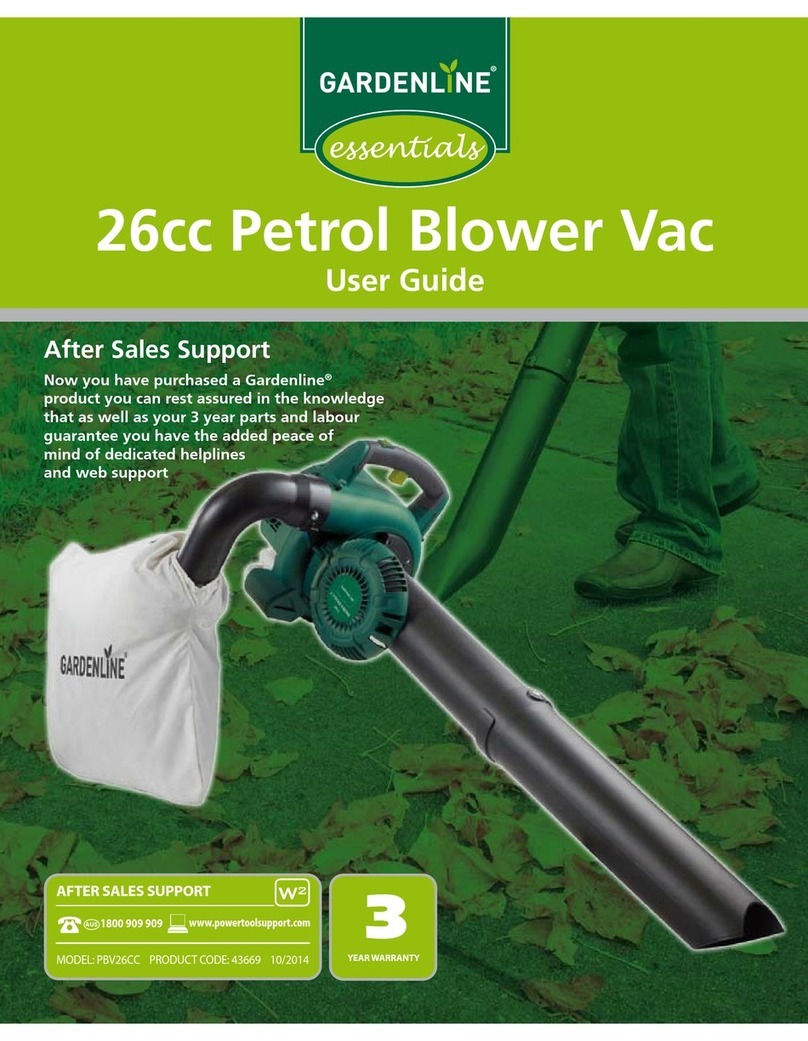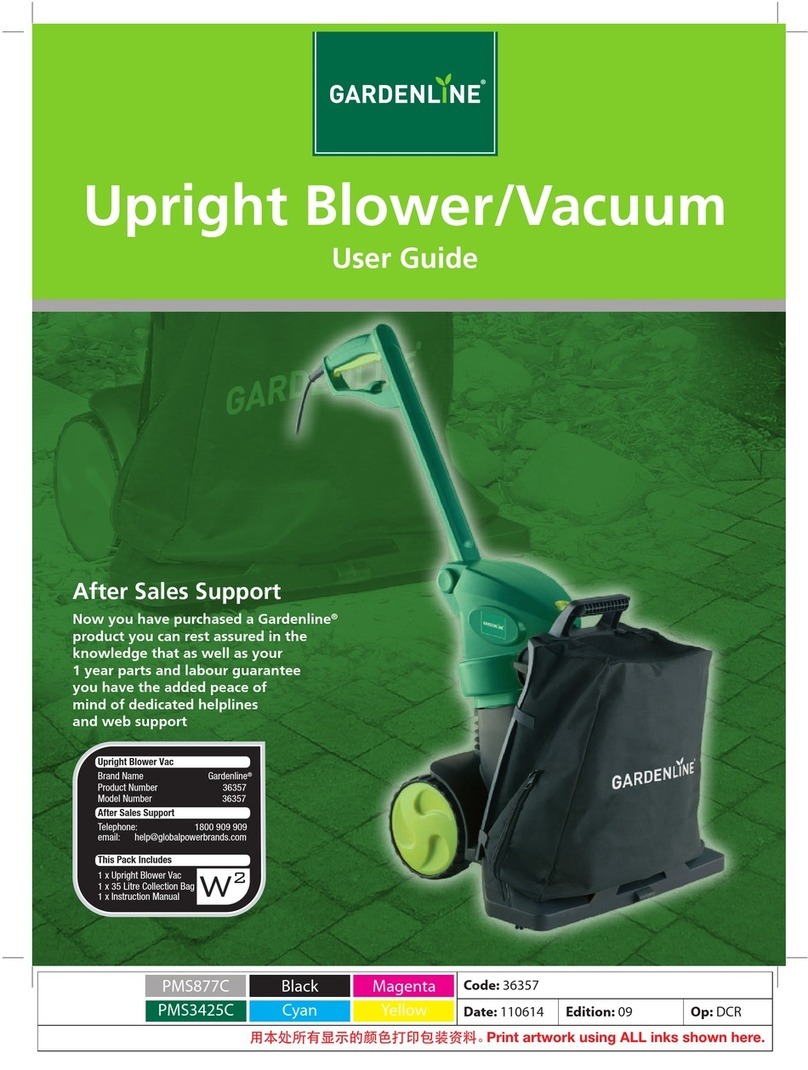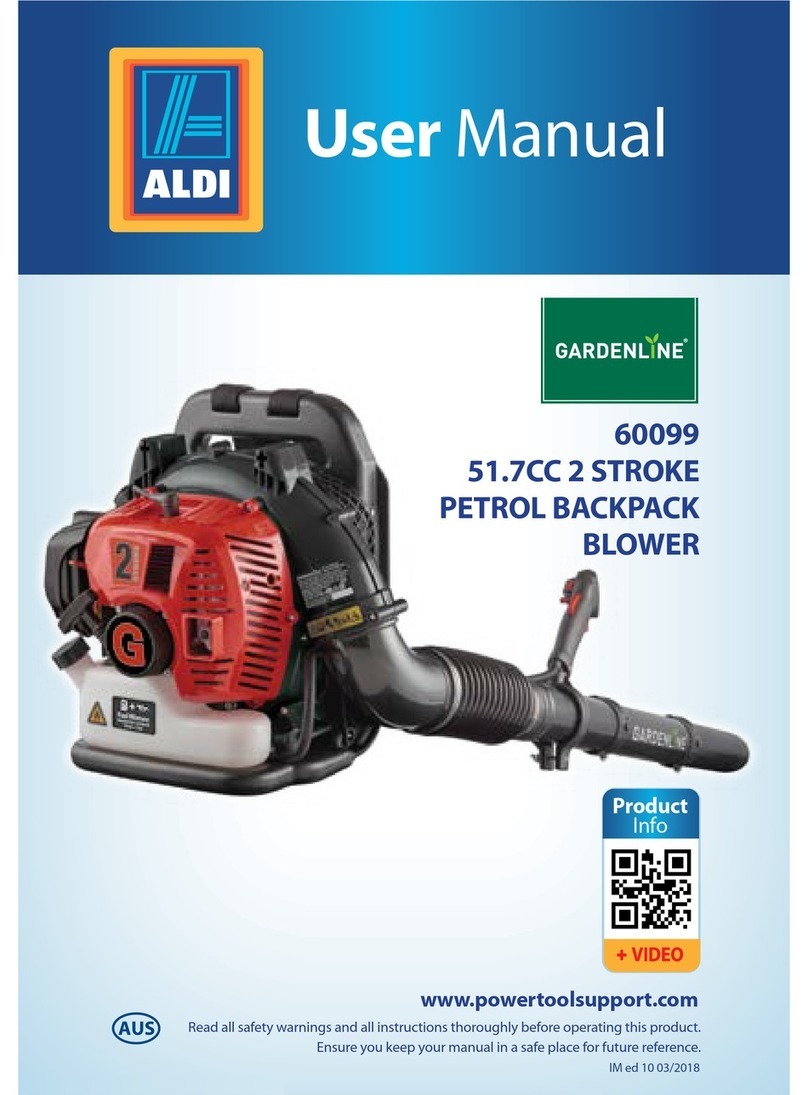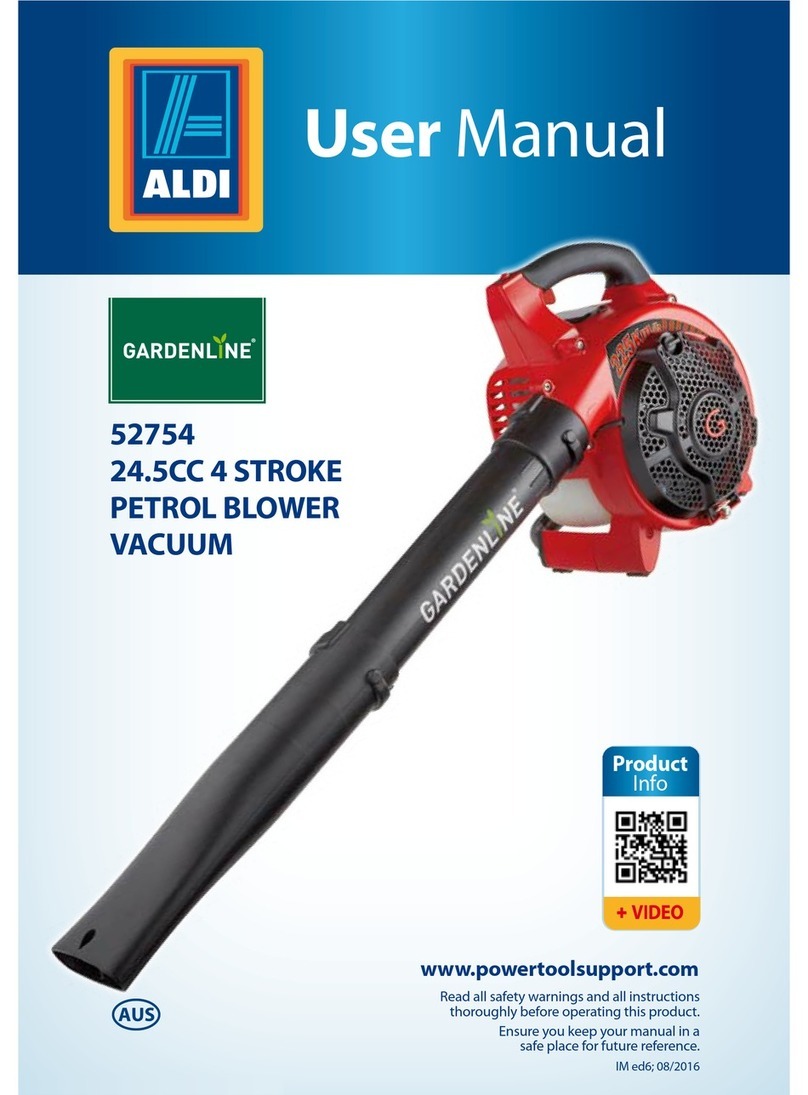Overview ................................................................................4
Use...........................................................................................5
Package contents/device parts.............................................6
General information............................................................... 7
Reading and storing the user manual ..................................... 7
Explanation of symbols .............................................................. 7
Safety ......................................................................................9
Proper use.....................................................................................9
General power tool safety instructions.................................. 10
Additional safety instructions for handheld electric
leaf blowers with blower function...........................................12
Supplementary safety instructions .........................................16
First use..................................................................................17
Checking the leaf blower and package contents..................17
Assembling the leaf blower ......................................................17
Mounting the cover ................................................................... 18
Mounting the front handle....................................................... 18
Mounting the tube..................................................................... 18
Mounting the wheels .................................................................19
Mounting the collector bag.......................................................19
Using the carrying strap............................................................19
Operation..............................................................................20
Preparation.................................................................................20
Activating/deactivating the leaf blower.................................21
Using the leaf blower in vacuum mode ................................. 22
Using the leaf blower in blower mode ................................... 23
Emptying the collector bag...................................................... 23
Removing blockages................................................................. 23
Cleaning................................................................................ 24
Maintenance and repair....................................................... 25
Storage ................................................................................. 26
Transport .............................................................................. 26
Troubleshooting................................................................... 27
Technical data ......................................................................28
Spare parts and accessories ................................................28
Noise/vibration information ............................................... 29
Disposal................................................................................. 31
Disposing of the packaging ......................................................31
Disposing of the leaf blower .....................................................31
Declaration of conformity.................................................... 32
Contents



































